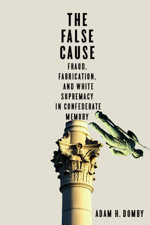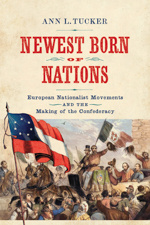In Remembrance of the Firing on Fort Sumter
In Remembrance of the Firing on Fort Sumter
by Clayton J. Butler, Ph.D., Editorial Fellow at UVA Press
April 12, 2021 marks 160 years to the day since the firing on Fort Sumter, the opening salvo of the Civil War. It can be tempting to think of that stretch of time as a massive gulf, practically unbridgeable—at least in the timeline of American history. But consider this: we are now exactly as far removed from the attack on Pearl Harbor, eighty years ago, as Pearl Harbor was from the bombardment of Fort Sumter. Eighty years (four score, if you will) before that, George Washington accepted the surrender of Lord Cornwallis at Yorktown. Those three leaps are all it takes to embrace the entirety of the United States’ existence. Scholars continue to grapple with and offer new assessments of the Civil War not only because it remains so persistently, often painfully, relevant to our lives (think of the Confederate flags brandished on January 6), but because it all happened not so long ago. We are still coming to terms with it, still gaining the temporal distance necessary to attain new perspectives and to produce critical reevaluations of the coming of the war, the course of the war itself, and the nature of the peace established in its wake. Three books published in 2020 by the University of Virginia Press have made valuable contributions to this ongoing conversation.
Newest Born of Nations: European Nationalist Movements and the Making of the Confederacy, by Ann L. Tucker, explores the ways that white southerners’ observation of nationalist revolutions and efforts at state formation across the Atlantic helped them lay the philosophical groundwork of their own stab for independence in North America. Future Confederates did not hatch their separatist schemes in a vacuum. As Tucker demonstrates, practically every political question they considered utilized an international perspective as a frame of reference – emphasizing their similarity or difference from a perceived European counterpart – to help situate themselves ideologically. For many white southerners, appreciation of the liberal impulses of European nationalist movements was tempered by their fundamental conservatism that emphasized the desirability of a firm social hierarchy. They approved of republicanism, less so of “rank” democracy, which they worried could easily lead to anarchy. When the war came, Tucker finds, their self-conception received something of a shock, especially when Italian nationalist icon Giuseppe Garibaldi rejected their claims to nationhood and declared his support for the Union.
Adrian Brettle’s Colossal Ambitions: Confederate Planning for a Post-Civil War World shows how Confederates’ wartime visions for what would follow their victory, which they continued to cherish right up to the spring of 1865, provides key insight into what they considered their raison d’être. Brettle’s work also constitutes a further nail in the coffin of the Lost Cause historiographical narrative. He shows that, rather than modestly wanting to be left alone, expansion represented the watchword of Confederates’ plan for the future. Their territorial ambitions, which they sustained well into the war – far past the point when some continue to contend that they “knew” the war to be lost – helps push back against a misleading teleological framing of the conflict. Confederates also actively sought to foster divisions within the remaining Union states. In order to maintain their independence and wealth in the imagined post-war environment, Confederates hoped to contribute to the further breakup of the Union in order that they might dominate the smaller confederations that would emerge. None of this, as Brettle makes clear, corresponds to the thinking of a people who felt their cause to be lost.
Finally, Adam Domby’s The False Cause: Fraud, Fabrication, and White Supremacy in Confederate Memory examines the ways that such a narrative – of valiant efforts against hopeless odds – could gain such widespread cultural purchase. The answer, he argues, is simple: by lying. The solidarity of the nineteenth-century white South, one willing to endure tremendous sacrifice and loss as a matter of pure principle, appears on closer examination as simply a myth, cultivated by individuals with the express political and social goal of maintaining white supremacy and Jim Crow. Pensions made available to Confederate veterans gave men with even the most tenuous claim to service an incentive to exaggerate their commitment to the cause, and functioned as a form of political patronage. Likewise, the number of UNC alumni purported to have fought for the Confederacy grew year after year until it reached a literally impossible figure, one that surpassed the number of UNC’s living graduates. The descendants of the Civil War generation displayed a greater commitment to the Confederacy than its contemporaries did.
As Domby’s work directly addresses, the struggle to define Civil War memory remains continual and contingent. No such thing as the final word on any given subject can ever truly exist in the study of history. And just as today’s date reminds us that only two lifetimes separate us from Fort Sumter and the start of the war, so these three books remind us to keep looking, keep thinking, and keep reading, because the dust has only begun to settle.
QuickLinks
Find a BookFor Our AuthorsRights and PermissionsRotunda Digital ImprintSupport UVA PressCareer OpportunitiesWalker Cowen Memorial PrizePrivacy PolicyContact Us
- P.O. Box 400318 (Postal)
- Charlottesville, VA 22904-4318
- 210 Sprigg Lane (Courier)
- Charlottesville, VA 22903-2417
- 434 924-3468 (main)
- 1-800-831-3406 (toll-free)
- 434 982-2655 (fax)

the future
of publishing
Affiliates





